
Review on 🏠 SafetySiren Pro4 Series: The Trusted Leader in Home Radon Detection Since 1993 - USA Version pCi/L by Jesse Stewart

Radon detector works well
The radon detector was delivered on the expected time and in bubble wrap. Winter came and the device was allowed to warm up to room temperature. Next, plug it into an outlet. An error message appeared during the initialization. According to the instructions, the power supply to the facility was turned on. This time the device responded correctly - beeping, flashing CAL, then dotted lines for short term and long term PCI/L readings. According to the instructions, after 48 hours the readings appeared instead of dotted lines. I placed the device in the bedroom of the house on the second floor. Initial readings were 1.8 pCi/L. This is almost half the EPA action limit of 4.0 pCi/L or 148 Bq/m^3. (Each 1 pCi/L equals 37 Bq/m^3.) The WHO states that 2.7 pCi/L or 100 Bq/m^3 is the effective level. The WHO also states that the risk of lung cancer increases by 16% for every 100 Bq/m^3 of long-term exposure. It's also important to remember that cancer risk is based on long-term exposure. It does not matter whether the exposure was continuous or intermittent. Exposure to radon increases over time. If you've moved from one house to another, each new exposure increases the long-term effects. After 7 days of observation, the radon index dropped to 1.7 pCi/l. We fully expected the readings in our home to increase as we moved the sensor upstairs and then down to the basement. After 6 days of monitoring the ground floor next to the kitchen and laundry room, the reading was 1.9 pCi/L. A week later, the readings fell to 1.0 pCi/L. Thinking something might be wrong, we monitored the readings for another week and they steadily increased to a maximum of 2.5 pCi/L. This value was maintained for 3 days and then steadily falls again. These results show why long-term monitoring is important. It's winter outside and the ground is starting to freeze, although there is no snow cover. This does not make the soil less permeable to radon gas. When it rains or snows, the ground becomes less permeable to radon, the gas is less able to spread to the outside air and is more likely to seep into the basement. The most common entry point is the basement, but radon can also enter through windows and doors. The water content of the soil around the house, how well the windows in the basement are sealed, how well the cracks and joints in the basement concrete are sealed and the porosity of the concrete affect the radon level in the basement. Radon levels (if you have well water) typically rise in winter in a closed home where water vapor releases radon gas in the laundry, dishwasher, and bathroom. The contribution from the evaporation of radon-containing well water is added to the contribution that enters the house from the basement in order to obtain the total amount of radon. That's what you read on the first and second floors of our house. The readings in the basement are due to radon leakage through cracks in the foundation and floor slab, as well as the porosity of the concrete itself. Our well water contains about 4000 pCi/l of dissolved radon. This is less than half of the EPA's allowable value of 10,000 pCi/L. It is expected that for every 10,000 pCi/L of dissolved radon, dishwashing, washing and showering will add 1.0 pCi/L to indoor air. We have no direct way of knowing if the extra 0.4 pCi/L was added due to water vapor. However, we can assume that some of the dissolved radon in our well water will be removed by the carbon filter in our home well water. Another remark can be added. The device has no battery backup. However, if the detector is moved to a new location, the data from the previous location will remain until a reset command is given via the button on the front of the unit. We are very pleased with the functionality of this device and will be using it to make decisions to reduce spring radon exposure. If you are interested, a user manual with technical data can be found online. The manual contains information on the sensor accuracy for short and long term measurements. This is not a professional, regularly calibrated instrument. However, the accuracy should be more than enough to determine when a professional should be called. Added note it's spring now and the ground is thawed and heaving. The radon levels on the ground floor have been between 2.2 and 2.7 pCi/L in the last two weeks. We also have 135 days of data for our ground floor apartment and the average is 2.0 pCi/L. The sensor is currently monitoring the basement so the size of the radon fan can be measured in cubic feet per minute (CFM). The larger the fan, the more electricity it constantly consumes. Most fans draw between 50 and 100 watts. In this location, electricity costs $0.20 per kWh. Annual running costs range from $88 to $175.
- Excellent overall performance
- State of the art
New products
Comments (0)
Top products in 🚨 Household Sensors & Alarms
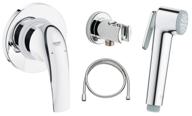
Hygienic shower Grohe BauCurve 123072, chrome

10 Review
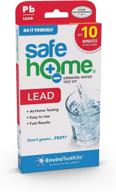
🚰 Ensure Your Family's Safety: DIY Lead in Drinking Water Test Kit for City or Well Water - Quick 10 Minute Test - Single Pack

9 Review
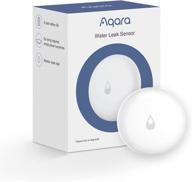
Aqara Water Leak Sensor: Wireless Mini Flood Detector for Alarm System & Smart Home Automation - Works with IFTTT

31 Review
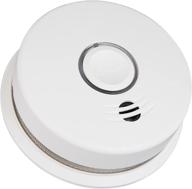
Interconnect Lithium Battery Powered Kidde Smoke & Carbon Monoxide Detector with Voice Alert - Combination Smoke & CO Alarm

9 Review
Another interesting products
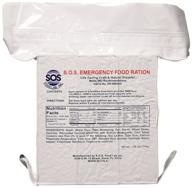
🔋 SOS Food Labs, Inc. 3 Day Emergency 3600 Calorie Food Bar - 72 Hour Package with 5 Year Shelf Life, Compact Size: 5"H x 2"W x 4.5"L

8 Review

Clear Disposable Emergency Rain Poncho with Hood for Adults - 20 Pack

8 Review

🍽️ S.O.S. Rations Emergency 3600 Calorie Food Bar (Cinnamon & Coconut, 2 Pack)

8 Review

Lingito Rain Poncho: Buy 5, 10, or 🌧️ 15 Packs - Disposable Emergency Rain Ponchos for Ultimate Protection

8 Review

